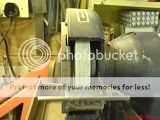Gary Morris
Established Member
Hi, can I have some advice please.
I recently bought a woodworking lathe and now comes the time to sharpen the 3 gouges / chisel's, along with 7 that 1 bought off ebay, which are badly ground on the end face (the business end)
I have read several 'forum searches' and the angle for gouges is 45°, 55° and between 50° & 60°
My understanding of a 'Gouge' is a 'U' shaped tool with the ground edge on the outside circumference and these are 'roughing out tools' to be used on the outside of a bowl etc.
So would any angle between 45° & 60° be ok for gouges?
My understanding of a 'Chisel' is a 'rectangular' shaped tool with a ground tip at an angle of 45° ?
thanks
Gary
I recently bought a woodworking lathe and now comes the time to sharpen the 3 gouges / chisel's, along with 7 that 1 bought off ebay, which are badly ground on the end face (the business end)
I have read several 'forum searches' and the angle for gouges is 45°, 55° and between 50° & 60°
My understanding of a 'Gouge' is a 'U' shaped tool with the ground edge on the outside circumference and these are 'roughing out tools' to be used on the outside of a bowl etc.
So would any angle between 45° & 60° be ok for gouges?
My understanding of a 'Chisel' is a 'rectangular' shaped tool with a ground tip at an angle of 45° ?
thanks
Gary














































